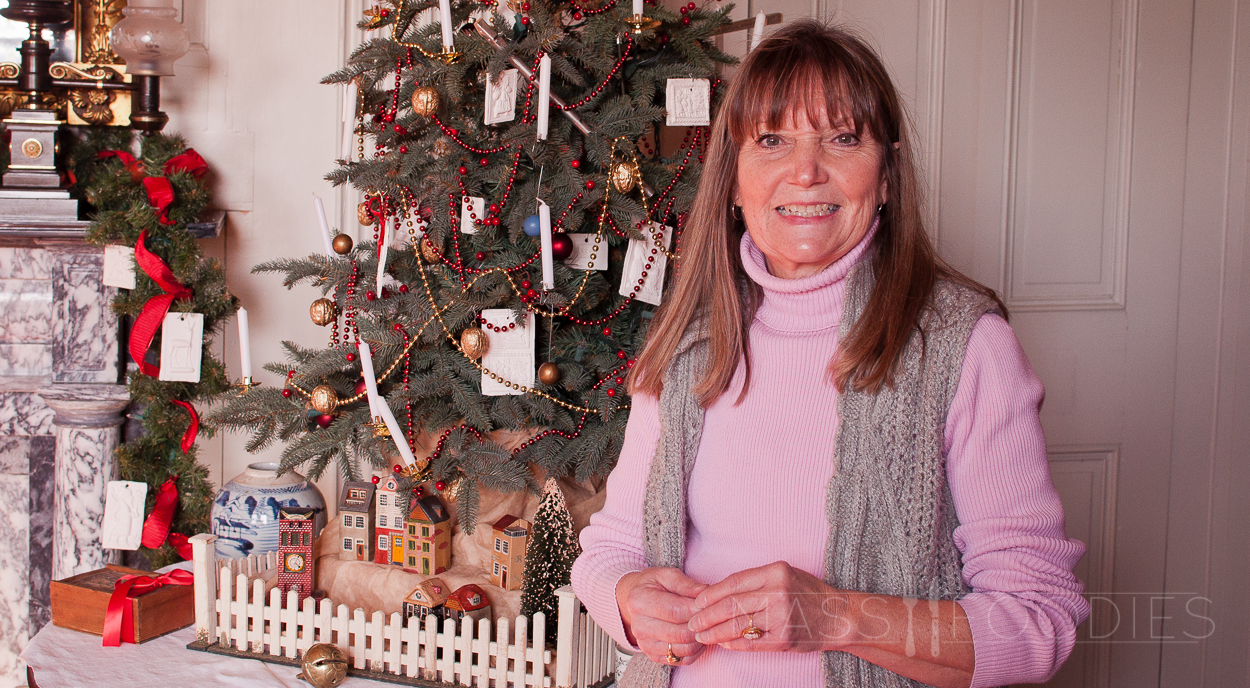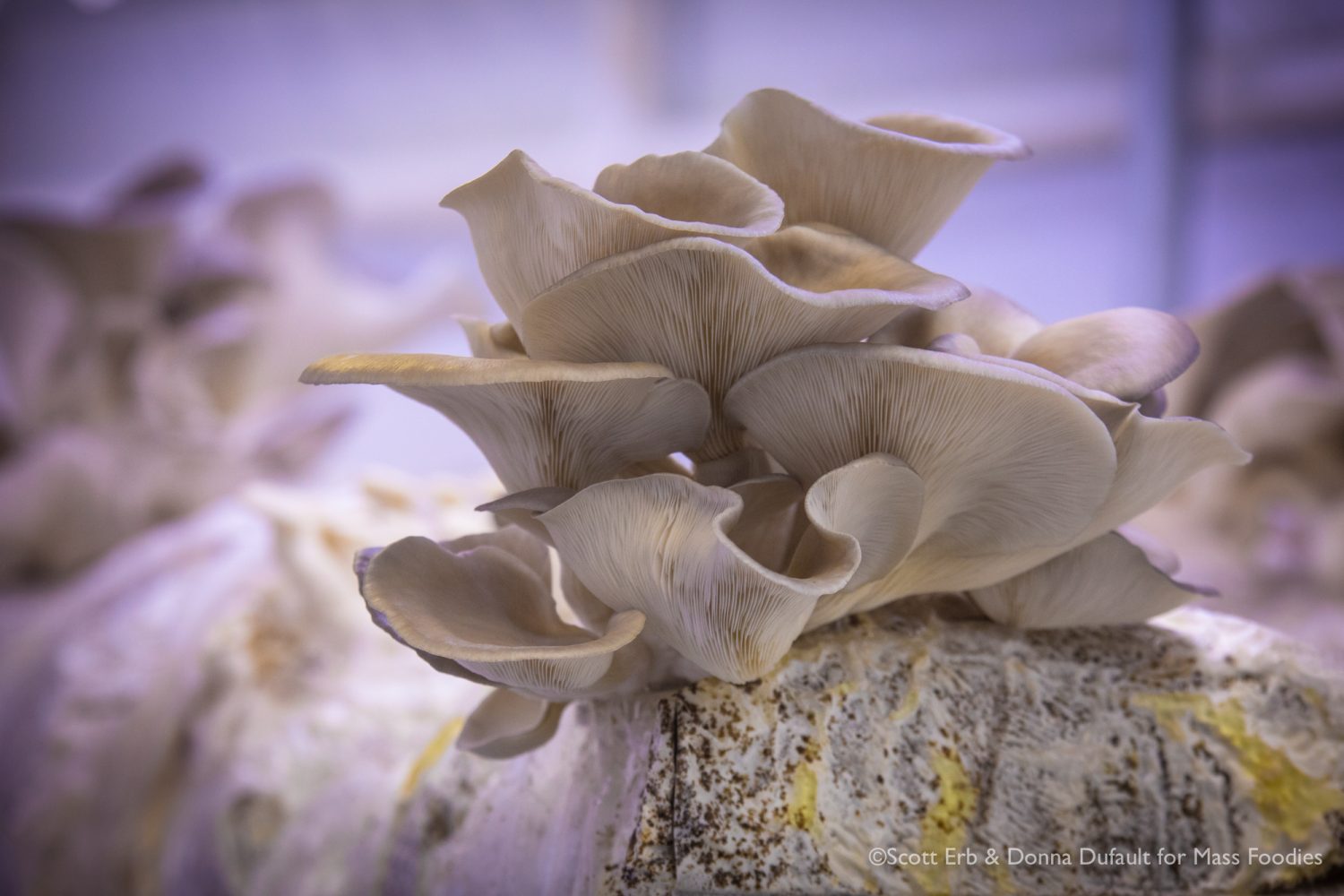
Let’s get some things out of the way about Brad Allain and the mushrooms he grows at his small gourmet mushroom farm, Wildwood Mushrooms, in Sutton: No, Brad does not grow mushrooms in his basement (it’s a completely above ground operation housed in the historic Manchaug Mill in the Blackstone Valley). No, his mushrooms do not grow in the dark (only white button mushrooms do – they are basically creminis deprived of light). No, not all mushroom foragers and farmers look like some grizzled woodsman in Wellies (I mean, look at him). And no, sorry Dead fans and anyone else looking to “trip,” Brad does not sell magic mushrooms – his are for culinary journeys not hallucinogenic ones.

That said, one bite and Brad’s mushrooms will blow your mind.
Don’t take my word for it: taste any of the mycophagous pleasures Jared Forman and Robin Clark of deadhorse hill or Matt Mahoney and Rachel Coit of Kummerspeck or Rob Fecteau of BirchTree Bread create using Wildwood’s mushrooms. They are just some of the chefs and restaurants that have lined up for the exquisite, fresh, local, and uber-tasty mushrooms Brad has produced since he opened in January 2018. Or better yet pick up some mushrooms at the Shrewsbury, Natick, Lexington, and Roslindale farmer’s markets, Whittier Farms in Sutton, Foppema’s Farm in Northbridge, Living Earth in Worcester, and starting this fall at Ed Hyder’s in Worcester and cook up tastiness for yourself.
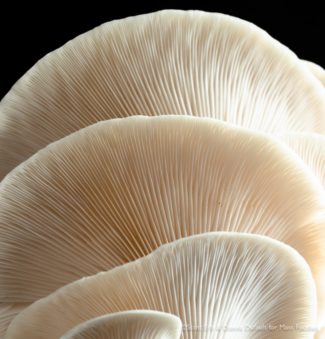 And don’t stick to the familiar. Shitake may happen but that’s just one of the fungus among us thanks to Wildwood. You really ought to try like lion’s mane, oyster, pioppino, and chestnut. Brad grows 6 to 10 varieties at Wildwood and to create them he must be equal parts farmer, scientist, artist, and detective. Gourmet mushroom growing in general is a craft and replicating it indoors it is even more challenging. The process stretches over weeks and requires several rooms and steps, much of the work customized by Brad.
And don’t stick to the familiar. Shitake may happen but that’s just one of the fungus among us thanks to Wildwood. You really ought to try like lion’s mane, oyster, pioppino, and chestnut. Brad grows 6 to 10 varieties at Wildwood and to create them he must be equal parts farmer, scientist, artist, and detective. Gourmet mushroom growing in general is a craft and replicating it indoors it is even more challenging. The process stretches over weeks and requires several rooms and steps, much of the work customized by Brad.
“Mushroom farming in general is very proprietary, and there are a lot of variables,” Brad says. “That’s why you don’t see a lot of gourmet mushroom farms anywhere. But I’m in love with the process. You have to put it all together in a way that works. You have to know how to read the mushrooms themselves. This whole world is amazing and really piques my interest because it is still so unknown. Even experienced mycologists are learning new things. The intrigue and mystery of the world of fungus is super interesting.”
Not that Brad grew up knowing this was his destiny. He didn’t forage in the woods while other kids played sports or video games, eating mushrooms like Sour Patch Kids. He graduated Linden State in Vermont with a degree in adventure recreation management, which led to work doing outdoor guiding like whitewater rafting. The traveling and seasonal lifestyle that came with that eventually wore on him, so he left the land completely, jumped on a Tall Ship, and lived and worked on it for three years. When he returned home, he built a tiny house on wheels and looked for what was next.
“I was always fascinated with growing and nature and the woods,” Brad explains. “I came across a continuing education class on mushroom growing in 2015 and thought mushrooms and fungus were fascinating. They are everywhere. They are essential to the ecosystem.”
The mushroom part of that ecosystem starts with the wood-loving mushrooms Brad grows – primary decomposers that break down raw hardwoods and grow on them. Secondary decomposers like portabellas like the compost left behind. They work symbiotically to break down trees into soil. But replicating this process inside is challenging, from trying to control all the environmental conditions to preventing contamination and ensuring the quality Brad expects. Hearing him describe it makes me wish I paid more attention in high school biology.
The Process
 The entire farm and process at Wildwood has been designed and customized by Brad. It begins with batch mixing: Mixing substrate that mimics the wood the mushrooms grow on in nature (oak or hardwood sawdust) with the fungus strain he wants to grow. This is the start of creating mycelium, the vegetative part of the mushrooms that grow underground. It will soon colonize the substrate, meaning grow until it takes over the dark wood and the entre bag becomes white.
The entire farm and process at Wildwood has been designed and customized by Brad. It begins with batch mixing: Mixing substrate that mimics the wood the mushrooms grow on in nature (oak or hardwood sawdust) with the fungus strain he wants to grow. This is the start of creating mycelium, the vegetative part of the mushrooms that grow underground. It will soon colonize the substrate, meaning grow until it takes over the dark wood and the entre bag becomes white.
Brad dials in a moisture level on the water meter, which is connected to valves that disperse the moisture evenly inside the mixer – a different “recipe” depending on the size of the batch and variety of mushroom. Once mixed, a pedal-operated pneumatic cylinder efficiently pushes out the mixture into plastic bags with HEPA filters that allow them to breathe and the mycelium to colonize without particle contamination.
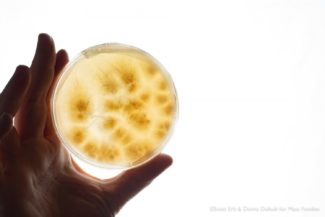 From there, the bagged substrate mixture gets placed on racks and rolled into the sterile laboratory where Brad has modified a former Pizza Hut dough proofer – essentially an insulated stainless-steel box – into a 11,000-watt sterilization cabinet. A microcomputer precisely heats the bags to 205 degrees for 18.5 hours and then gradually cools then down over 5 to 7 days. Brad monitors the process carefully to make sure there are no issues, that clean air is constantly being replaced in the bags as they cool, and the things he doesn’t want (bacteria, yeast, mold spores) get out and stay out.
From there, the bagged substrate mixture gets placed on racks and rolled into the sterile laboratory where Brad has modified a former Pizza Hut dough proofer – essentially an insulated stainless-steel box – into a 11,000-watt sterilization cabinet. A microcomputer precisely heats the bags to 205 degrees for 18.5 hours and then gradually cools then down over 5 to 7 days. Brad monitors the process carefully to make sure there are no issues, that clean air is constantly being replaced in the bags as they cool, and the things he doesn’t want (bacteria, yeast, mold spores) get out and stay out.
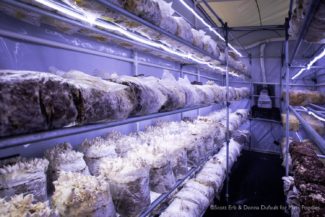 “It’s a mix between art and science,” Brad notes. “If my mushrooms are growing a way I don’t like, I can look for issues like high CO2 content or low humidity and adjust.”
“It’s a mix between art and science,” Brad notes. “If my mushrooms are growing a way I don’t like, I can look for issues like high CO2 content or low humidity and adjust.”
Once the bags are cooled, Brad injects them with a spawn (inoculated grain like millet or rye berries) to allow the fungus to propagate, seals them up, and tosses them in a dryer to mix everything evenly. Then it’s off to the climate-controlled incubation or grow room where the mushrooms do their thing.
If the process so far has been mechanical and lab-driven (like a biomedical facility and a machine shop had a baby), the grow room is the progeny of a walk-in fridge and Invasion of the Body Snatchers: simultaneously beautiful, fascinating, and maybe initially a little disconcerting. But looking closely at the heads of lion’s manes poking from the bags and dangling from the racks or all the colors of oyster mushrooms reaching for the air you are nothing but captivated … and really hungry.
Selling Shrooms
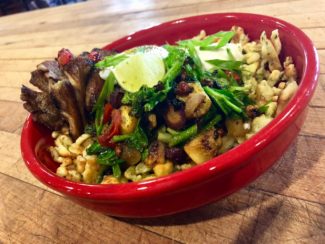
It wasn’t long after Brad opened that he won the love of the chef community and the booming Worcester restaurant and food scene. “Good quality mushrooms in general are hard to come by,” says Brad. “Most mushrooms that chefs and people who love to cook have available to them are from Pennsylvania or large national mushroom companies. By the time they get to us they are old, and mushrooms don’t have a great shelf life and don’t travel well. They are fragile and delicate. So it’s essential for them to be as local as possible to get from farmer to chef in the shortest amount of time. Jared Forman was my first supporter and it just grew from there. When I bring my product to chefs they know it is special. They want to support it and get more. It’s essential for a farmer like me to have that support system in the culinary community.”
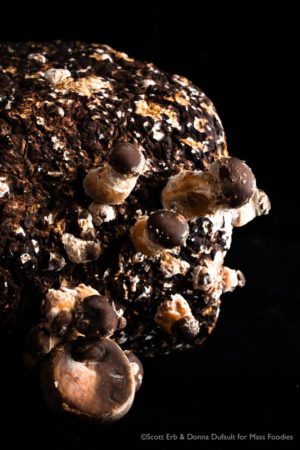 Not that Brad was surprised by the response. He got into the business knowing it was a niche that needed to be filled and like any passionate entrepreneur, he worked his butt off to make those connections and fill the void for what his customers demanded:
Not that Brad was surprised by the response. He got into the business knowing it was a niche that needed to be filled and like any passionate entrepreneur, he worked his butt off to make those connections and fill the void for what his customers demanded:
“I am not reinventing the wheel or offering varieties that are unique. I am giving chefs access on a routine basis to a really high-quality fresh mushrooms every single week. Whatever they want. I’m harvesting and delivering straight to them unlike the stuff that gets to them a week and a half old with a shorter shelf life.”
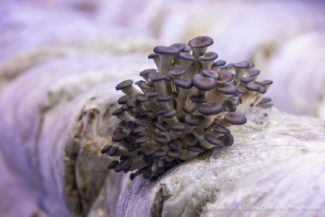 Not to mention more usable product. Brad’s controlled environments allows the caps get nice and big so there is more to work with and less going to compost. Customers have responded at farmer’s markets too. Lion’s mane is the most popular for its medicinal value, while oysters are the closest to a gateway mushroom for those just wading in. They are familiar but perhaps not with the off-the-charts flavor and in the golden, pink, blue colors of Brad’s. (A bit of advice from Brad: Do not eat raw mushrooms. The chitin or cell wall is hard for our bodies to break it down so cook them any way you want.)
Not to mention more usable product. Brad’s controlled environments allows the caps get nice and big so there is more to work with and less going to compost. Customers have responded at farmer’s markets too. Lion’s mane is the most popular for its medicinal value, while oysters are the closest to a gateway mushroom for those just wading in. They are familiar but perhaps not with the off-the-charts flavor and in the golden, pink, blue colors of Brad’s. (A bit of advice from Brad: Do not eat raw mushrooms. The chitin or cell wall is hard for our bodies to break it down so cook them any way you want.)
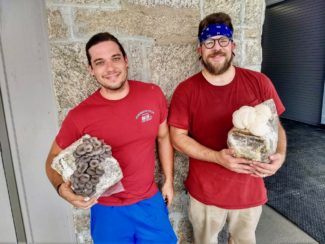
The result of all this demand is leading to a happy looming problem: With business mushrooming, Wildwood will likely need to expand. For now Brad has brought on his first employee to help: Zack Slik, a musician cum mushroom farmer well known around Worcester and who loves the art behind the science.
For Brad, the only downside to all the success with his indoor farm is he does miss the outdoor life: “I still like to forage a few times a year in the woods. There is something special about that. It brings me back to the land and where they came from.”

